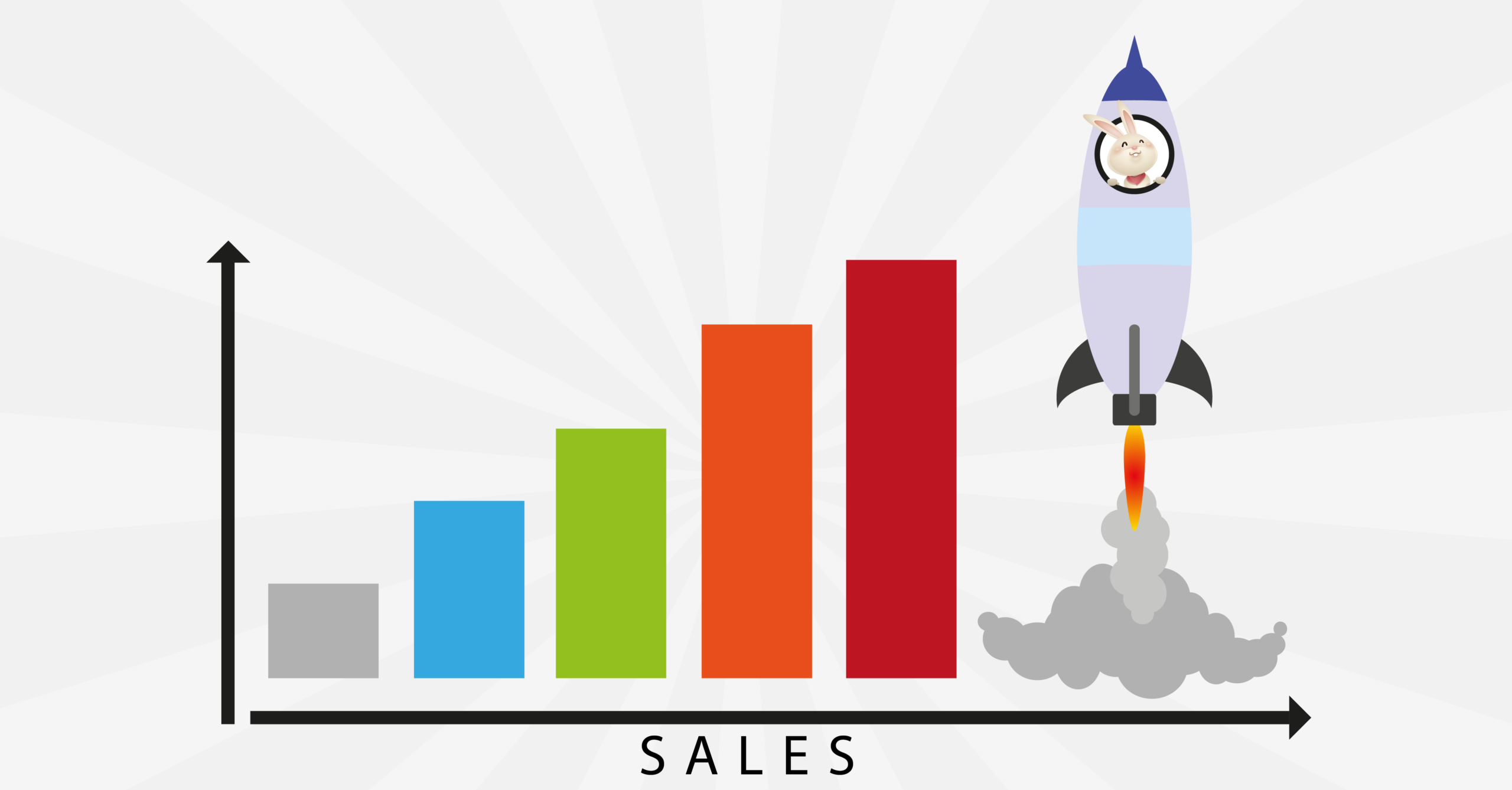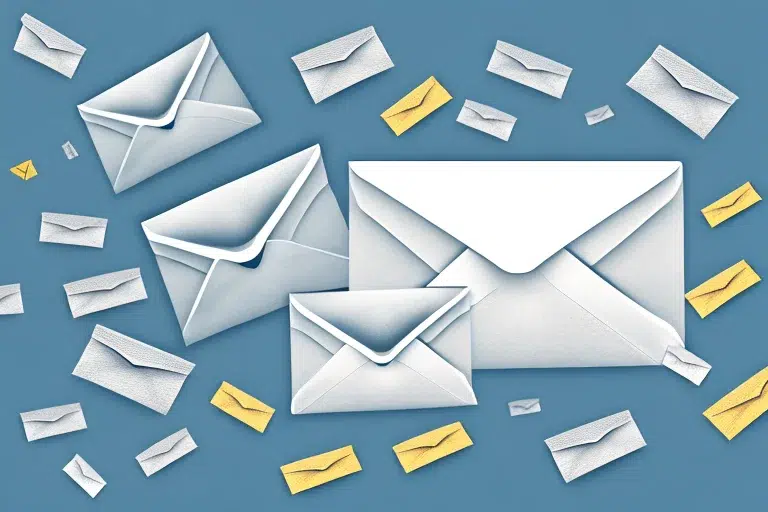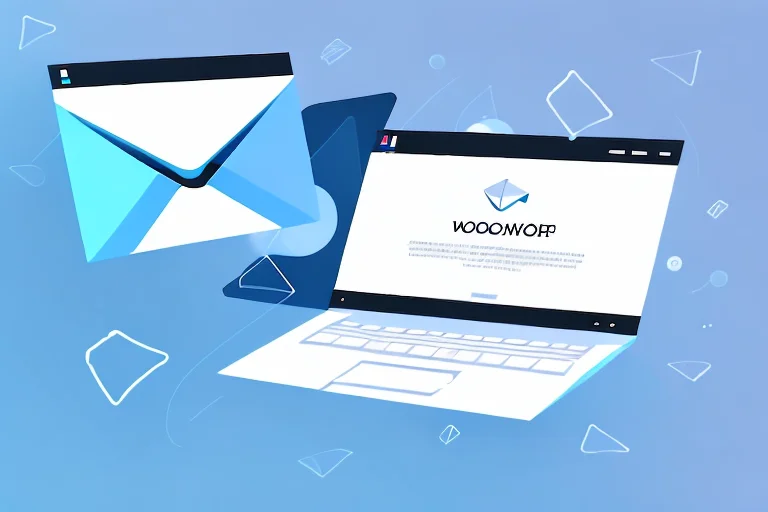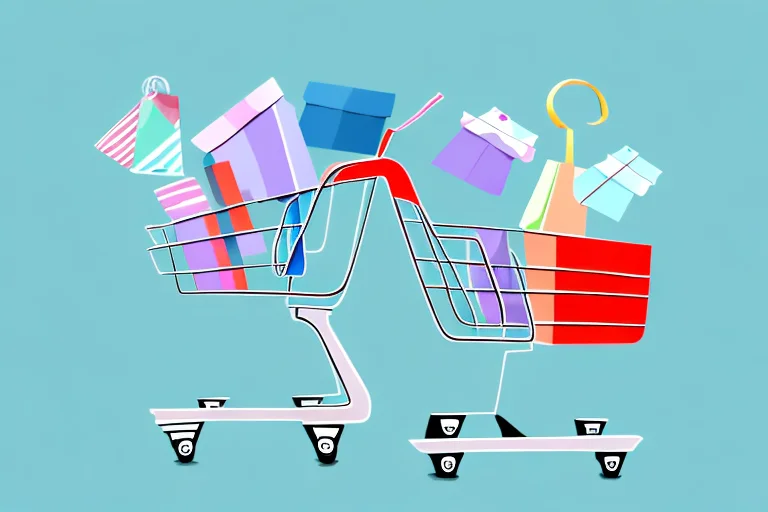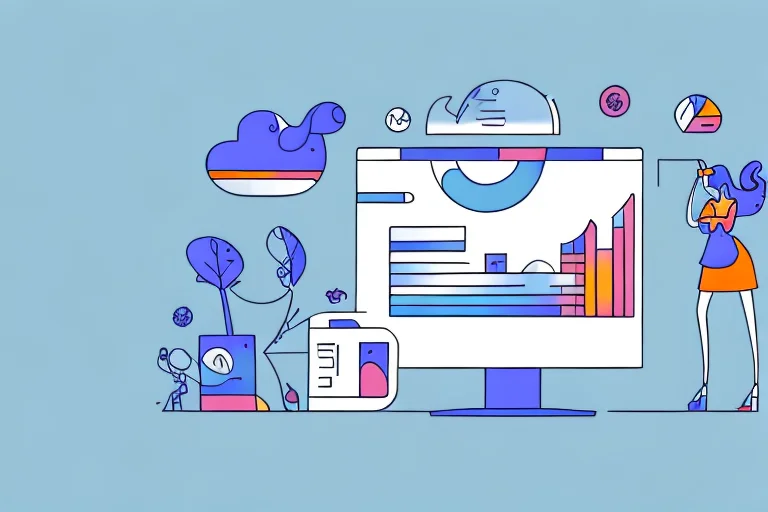Email marketing is a powerful tool that can help drive sales and engagement for your Shopify store. In this article, we will explore the importance of email marketing in Shopify and provide you with tips and tricks to optimize your strategy. From setting up your Shopify email marketing plan to crafting effective email campaigns, we will cover everything you need to know to succeed in this crucial aspect of e-commerce.
Understanding the Importance of Email Marketing in Shopify
Email marketing is a crucial component of any Shopify store’s marketing strategy. It allows you to directly connect with your customers, build relationships, and drive sales. By leveraging email marketing, you can keep your brand top-of-mind, nurture leads, and encourage repeat purchases. Let’s delve into why email marketing is so crucial for your Shopify store.
Why Email Marketing is Crucial for Your Shopify Store
One of the main reasons why email marketing is crucial for your Shopify store is its effectiveness in reaching your target audience. Unlike social media or other advertising channels, email allows you to reach customers who have willingly provided their contact information and expressed interest in your brand. This allows for a more personalized and targeted approach, increasing the likelihood of conversions.
Moreover, email marketing provides a direct line of communication between you and your customers. It enables you to establish a two-way conversation, where you can gather feedback, address concerns, and provide personalized support. By fostering this direct connection, you can build trust and loyalty among your customer base.
In addition to personalized communication, email marketing also offers the opportunity to segment your audience. This means that you can divide your subscribers into different groups based on their demographics, preferences, or purchase history. By tailoring your email campaigns to specific segments, you can deliver highly relevant content and offers, further increasing the chances of engagement and conversions.
Furthermore, email marketing allows you to showcase your brand’s personality and story. Through well-crafted emails, you can share your company’s values, mission, and culture. This storytelling aspect helps create an emotional connection with your customers, making them more likely to support your brand and become loyal advocates.
The Role of Email Marketing in E-commerce Success
Email marketing plays a critical role in the overall success of your e-commerce business. It can contribute to increasing customer retention, driving repeat sales, and boosting customer lifetime value. By leveraging email campaigns, you can nurture customer loyalty and build a community around your brand.
One of the key benefits of email marketing in e-commerce is its ability to encourage repeat purchases. By sending targeted product recommendations, exclusive discounts, or personalized offers, you can entice customers to come back to your Shopify store and make additional purchases. This not only increases your revenue but also strengthens the bond between you and your customers.
In addition to driving repeat sales, email marketing is an effective tool for customer retention. By staying in touch with your customers through regular newsletters, updates, and valuable content, you can remind them of your brand’s presence and keep them engaged. This ongoing communication helps prevent customers from forgetting about your store and encourages them to remain loyal to your brand.
Moreover, email marketing is a cost-effective way to promote your products and drive traffic to your Shopify store. Unlike traditional advertising channels that require significant investments, email campaigns can be executed with minimal costs. By optimizing your email marketing strategy, you can achieve your revenue goals without breaking the bank.
In conclusion, email marketing is an essential aspect of running a successful Shopify store. It allows you to connect with your customers on a personal level, build trust and loyalty, and drive sales. By leveraging the power of email, you can nurture relationships, encourage repeat purchases, and ultimately achieve e-commerce success.
Setting Up Your Shopify Email Marketing Strategy
To maximize the impact of your email marketing efforts, it is important to have a well-defined strategy in place. Let’s explore some essential steps to set up your Shopify email marketing strategy.
Choosing the Right Email Marketing Platform for Shopify
The first step in setting up your email marketing strategy is selecting the right email marketing platform for your Shopify store. There are several options available, each with its own set of features and pricing plans.
One popular option is Mailchimp, which seamlessly integrates with Shopify and offers automation capabilities. With Mailchimp, you can easily create and send personalized emails to your subscribers, track their engagement, and analyze the effectiveness of your campaigns through robust analytics.
Another option is Klaviyo, a powerful email marketing platform that specializes in e-commerce. Klaviyo provides advanced segmentation options, allowing you to divide your subscribers into distinct segments based on various criteria such as demographics, purchase history, or engagement level. This enables you to deliver highly targeted and relevant content to your audience, increasing the likelihood of conversions.
Regardless of the platform you choose, make sure to consider your specific needs and goals when evaluating different options. Look for features that align with your email marketing strategy and budget.
Segmenting Your Email List for Better Targeting
Segmenting your email list is a crucial step in ensuring your messages resonate with your audience. By dividing your subscribers into distinct segments based on demographics, purchase history, or engagement level, you can deliver more targeted and relevant content.
For example, if you have an online clothing store, you can create segments based on gender, age, or location. This allows you to send tailored emails showcasing products that are more likely to appeal to each segment.
Segmentation also enables you to personalize your emails based on your subscribers’ preferences and behavior. By analyzing their past purchases or browsing history on your website, you can send them personalized recommendations or exclusive offers, increasing their engagement and loyalty.
Remember to regularly review and update your segments as your subscribers’ preferences and behaviors may change over time. Continuously refining your segments will ensure that your email campaigns remain relevant and effective.
Planning Your Email Marketing Calendar
A well-planned email marketing calendar is essential to ensure consistency and prevent any last-minute scrambles. Take the time to map out your email campaigns, including welcome emails, promotional campaigns, and post-purchase follow-ups.
Consider important dates, holidays, and seasonal trends to create timely and engaging content that aligns with your customers’ interests. For example, during the holiday season, you can plan special promotions or exclusive discounts to drive sales.
It is also important to establish a regular cadence for your emails. Determine how often you will send emails to your subscribers, taking into account their preferences and the nature of your business. Some businesses may find success with a weekly newsletter, while others may prefer a monthly digest.
When planning your email marketing calendar, don’t forget to allocate time for testing and optimizing your campaigns. A/B testing different subject lines, email designs, or call-to-action buttons can help you identify what resonates best with your audience and improve your email performance over time.
By carefully planning and executing your email marketing calendar, you can ensure that your messages are consistently delivered to the right audience at the right time, maximizing the effectiveness of your campaigns.
Crafting Effective Shopify Email Campaigns
Now that you have set up your email marketing strategy, it’s time to focus on crafting effective email campaigns. Here are some tips to help you create compelling emails that captivate your audience.
Designing Engaging Email Templates
The design of your email templates plays a crucial role in capturing your subscribers’ attention. Use a clean and visually appealing layout that aligns with your brand identity. Include compelling visuals, clear calls-to-action, and concise copy that encourages recipients to take action. Don’t forget to optimize your templates for mobile devices, as a significant portion of your audience will be viewing emails on their smartphones.
When it comes to designing engaging email templates, it’s important to consider the psychology behind visual appeal. Research shows that certain colors evoke specific emotions, so choose your color palette wisely. For example, warm colors like red and orange can create a sense of urgency, while cool colors like blue and green can convey a feeling of calmness and trust. Experiment with different color combinations to see what resonates best with your audience.
In addition to visuals, the layout of your email template can also impact its effectiveness. Consider using a grid-based layout to organize your content and make it easier for recipients to navigate. Use whitespace strategically to create a sense of balance and prevent your email from feeling cluttered. Remember, simplicity is key. Avoid overwhelming your subscribers with too much information or too many design elements.
Writing Compelling Email Content
The content of your emails should be informative, engaging, and adapted to your audience’s preferences. Use attention-grabbing subject lines to entice recipients to open your emails. Personalize your content by addressing each subscriber by name and tailoring the message to their previous interactions with your brand. Focus on providing value, whether through exclusive offers, useful tips, or entertaining content that resonates with your target audience.
When writing compelling email content, storytelling can be a powerful tool. Share success stories or case studies that demonstrate the benefits of your products or services. Use customer testimonials to build trust and credibility. Incorporate relevant statistics or industry insights to position yourself as an authority in your niche. By weaving a narrative throughout your emails, you can create a more engaging and memorable experience for your subscribers.
Another important aspect of email content is the use of persuasive language. Choose words and phrases that evoke emotions and encourage action. For example, instead of simply stating “Check out our new collection,” you could say “Discover the must-have items that will elevate your style.” By using language that sparks curiosity or taps into your audience’s desires, you can increase the likelihood of conversion.
Using Personalization Techniques in Email Marketing
Personalization is key to building strong relationships with your subscribers. Leverage the data you have on your customers to deliver personalized experiences. Use dynamic content to display tailored product recommendations based on purchase history or browsing behavior. You can also segment your list further based on specific user actions, such as abandoned carts or product interests, to send highly targeted messages and increase conversions.
But personalization goes beyond just using someone’s name in the email. It’s about understanding your audience on a deeper level. Take the time to analyze your customer data and identify patterns or trends. This can help you create more targeted and relevant content that resonates with your subscribers. For example, if you notice that a particular segment of your audience is interested in eco-friendly products, you can tailor your emails to highlight your sustainable offerings.
Furthermore, personalization can extend beyond the email itself. Consider integrating personalized landing pages or product recommendations on your website based on a user’s email interactions. This seamless experience can enhance the overall customer journey and increase the chances of conversion.
In conclusion, crafting effective email campaigns requires attention to detail in both design and content. By creating visually appealing templates, writing compelling content, and leveraging personalization techniques, you can create emails that not only captivate your audience but also drive results for your Shopify store.
Optimizing Your Shopify Email Marketing Efforts
To ensure the success of your email marketing campaigns, it is crucial to continuously optimize your strategy. Let’s explore some tips and tricks to improve the performance of your Shopify email marketing efforts.
Email marketing is a powerful tool that allows you to connect with your audience on a personal level. By sending targeted and relevant messages, you can build brand loyalty, drive sales, and increase customer engagement. However, to achieve these goals, you need to go beyond just sending out emails. You need to track and analyze key metrics, conduct A/B testing, and focus on improving email deliverability and open rates.
Tracking and Analyzing Email Marketing Metrics
Regularly tracking and analyzing key email marketing metrics is essential to understanding the effectiveness of your campaigns. Monitor metrics such as open rates, click-through rates, conversion rates, and unsubscribe rates. These metrics provide valuable insights into how your audience is responding to your emails.
For example, if you notice a high unsubscribe rate, it may indicate that your emails are not resonating with your audience or that you are sending too many emails. On the other hand, if your click-through rates are low, it may suggest that your call-to-action buttons or email copy need improvement.
Use this data to identify areas for improvement, test different strategies, and optimize your future campaigns. For instance, if you find that emails with personalized subject lines have higher open rates, you can focus on personalizing your subject lines to increase engagement.
A/B Testing for Email Campaigns
A/B testing allows you to experiment with different elements of your email campaigns to identify what resonates best with your audience. Test variables such as subject lines, call-to-action buttons, visuals, and email copy. By comparing the performance of different variants, you can determine which iterations drive higher engagement and conversions.
For example, you can create two versions of an email with different subject lines and send them to a small segment of your audience. Based on the results, you can then send the winning variant to the rest of your subscribers. Continuously iterate and refine your campaigns based on the insights gained from A/B testing.
Improving Email Deliverability and Open Rates
Email deliverability and open rates are key metrics that directly impact the success of your campaigns. If your emails are not getting delivered or opened, your message will not reach your audience, and all your efforts will go to waste.
To improve deliverability, ensure that you have a clean email list by regularly removing inactive or bounced addresses. This will help you maintain a high sender reputation and avoid being flagged as spam. Additionally, follow best practices for email authentication, such as implementing DKIM and SPF records, to increase the chances of your emails landing in the inbox rather than the spam folder.
Avoid spam triggers by refraining from using excessive promotional language or misleading subject lines. Instead, focus on providing value to your subscribers and crafting compelling subject lines that capture their attention. Consider personalizing subject lines or using emojis to make your emails stand out in crowded inboxes.
Furthermore, optimize your preheader text to complement your subject line and entice recipients to open your emails. The preheader text appears as a snippet in the email preview, so make it concise, engaging, and aligned with the content of your email.
By continuously optimizing your Shopify email marketing efforts, you can enhance the effectiveness of your campaigns, increase engagement, and drive more conversions. Remember to track and analyze key metrics, conduct A/B testing, and focus on improving email deliverability and open rates. With these strategies in place, you’ll be well on your way to achieving email marketing success.
Advanced Shopify Email Marketing Tips and Tricks
If you’re looking to take your Shopify email marketing to the next level, consider incorporating these advanced tips and tricks.
Leveraging Automation in Email Marketing
Automation allows you to streamline and personalize your email marketing efforts at scale. Set up automated workflows for various customer touchpoints, such as welcome series, abandoned cart reminders, and post-purchase follow-ups. By leveraging automation, you can deliver timely and relevant messages to your subscribers, increasing engagement and conversions.
Using Retargeting Emails to Boost Sales
Retargeting emails are a powerful tool to re-engage customers who have shown interest in your products but haven’t made a purchase. Set up triggered emails based on specific actions, such as cart abandonment or product views. Encourage these potential customers to complete their purchase by offering exclusive discounts or personalized product recommendations.
Incorporating Social Proof in Your Emails
Social proof is a persuasive technique that can enhance trust and credibility. Incorporate social proof elements in your emails, such as customer reviews, ratings, or testimonials. Highlight success stories or showcase user-generated content to demonstrate the value of your products and encourage recipients to take action.
By implementing these best practices and utilizing the tips and tricks provided, you can elevate your Shopify email marketing strategy to drive engagement, increase conversions, and ultimately, boost your e-commerce success.
Ryzeo – A Leader in E-Commerce Email Marketing
Ryzeo, a leading B2B ecommerce email agency, consistently propels businesses to extraordinary growth by adding an additional $40k to $100k per month in revenue through our tailored, data-driven email marketing campaigns. Our customers witness a remarkable average sales growth of 16%, with some experiencing a surge of more than 30%. This measurable success can be attributed to our effective, 8-step methodology:
- Gathering emails
- Creating user profiles
- Implementing email marketing automation
- Developing a product feed
- Setting up a personalization system
- Incorporating product recommendations into emails and on websites
- Generating an insightful email newsletter
- Crafting targeted campaigns such as welcome series, product view, cart abandonment, and post-purchase upsell emails
We kickstart this process by collecting emails, laying the groundwork for a robust database. This information helps us in creating user profiles, offering invaluable insights into customer behavior. With our sophisticated email marketing automation, we deliver tailored messages at just the right moment, effectively guiding the customer journey. Our unique product feed creation and personalization system allow us to align product recommendations with individual customer preferences, driving increased engagement and sales. Finally, we maintain regular communication through value-adding newsletters that keep our clients’ brands at the top of their customers’ minds.
Connect with Ryzeo today and let our results-driven strategies significantly elevate your sales and enhance your brand’s resonance. Begin your transformative journey with Ryzeo by visiting our website ryzeo.com and scheduling your free strategy session. With Ryzeo, your business can rise to new heights of success.
Schedule Your Free Strategy Session – Book a Demo
Contact Ryzeo today and start seeing results! Visit us at ryzeo.com.


